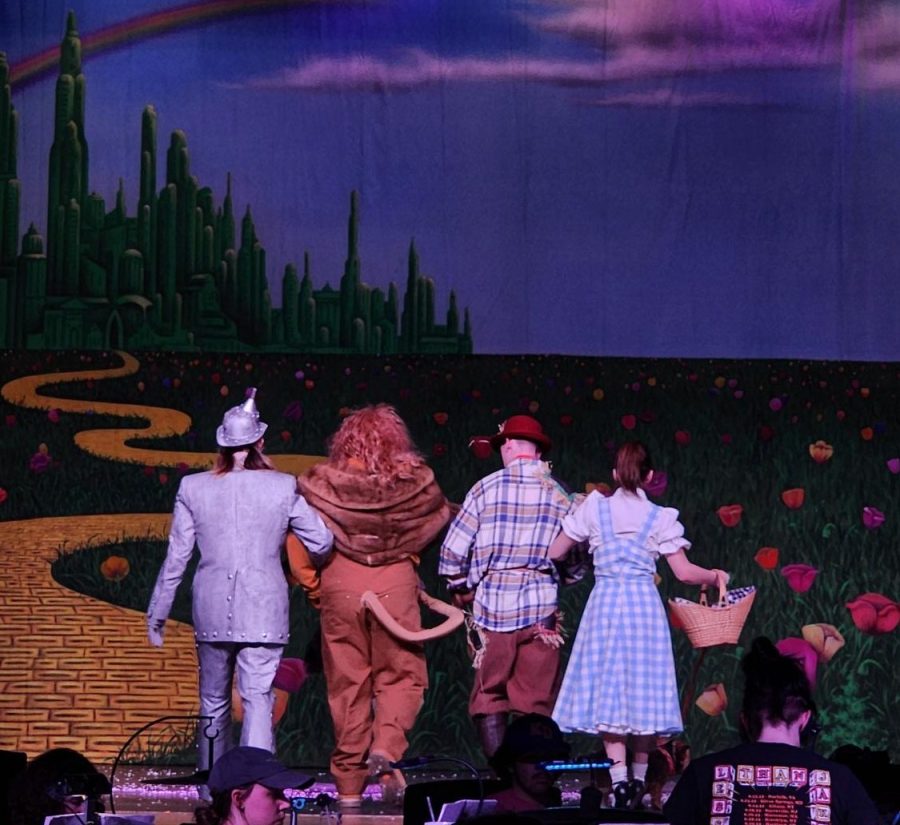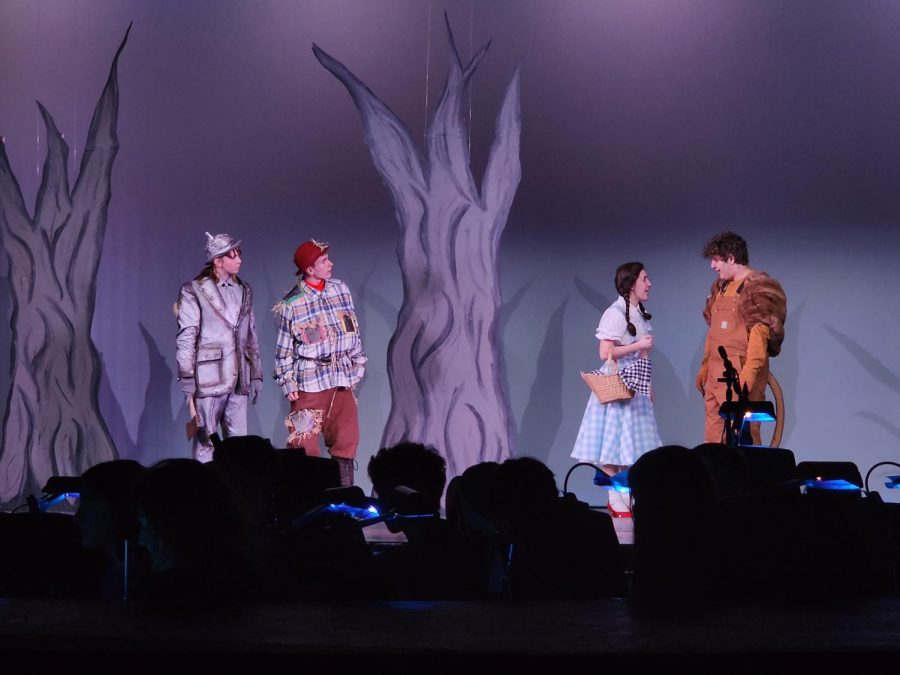The Wizard Of Oz
March 13, 2023
The Wizard of Oz debuted on March 2. The drama club spent several months and countless hours working and preparing for the big day, but a production such as this does not go without a variety of struggles.
The show ran five consecutive performances over the course of four days.
Faculty and staff responsible for the show included: director and choreographer Barbara Peterson, alumni and assistant director Kat Johnston, vocal director Samantha Garner, and director of the pit orchestra Carly Spinna.
The Wizard of Oz follows the story of young Dorothy Gale (Madison Lebrun) and herdog Toto. The two get stuck in a twister that strikes her family’s farm and end up in a strange and magical place.
To note, of the many talented cast members, the audience’s favorite may have been junior Hailee Taylor’s family dog Reese, who played Toto.
Making use of a live dog had many challenges, such as the fact that Reese is a senior dog who struggled to learn new tricks.
Other challenges involved the elaborate behind-the-scenes magic of Oz. Peterson identified just a few of those struggles: “How do you make a witch melt? How do you throw fireballs onstage safely? If you don’t actually fly the characters, how do you make their entrances special?”
The set pieces were actually quite large and there was limited space to store them, so Peterson and the cast had to get creative in design and storage.
In addition, the crew struggled to learn how to maneuver and store the set pieces, the reason for this is because of the delayed completion of major set pieces.
Garner spoke on how incorporating a younger cast posed another struggle. She said, “We used k-6 kids as the Munchkins, so scheduling around them was a big challenge because we had to make sure we weren’t keeping them too late while also making sure they felt prepared.”
Technical issues were also a major set-back because the wires kept breaking in the microphones, and at one point Madison LeBrun’s microphone pack broke entirely.
Auditions for the production occurred in the second week of December; this is about a month later than auditions have occurred in past years, which could have contributed to some of the complications in rehearsal time.
While the show had many unique struggles, the cast and crew adapted and performed in such a way that the audience was rarely aware of any problems. “The people in the show are what make any show memorable. This cast and crew, though many of them were very young and new to the program, really pulled together to make this show work. Good teamwork and good chemistry always help in making a show successful,” said Peterson.



